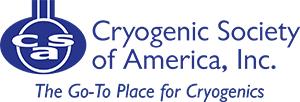
Since 2018 I have been writing this column on pioneers in cryogenics. So far, a total of 30 people have been profiled. With this column taking a slightly different direction in the future (more below), it’s worth asking if these pioneers had anything in common. Here are a few common themes seen in many of the people examined so far:
The individuals had interests in and made significant contributions to other fields.
Breadth of interest is probably the most commonly seen trait of these pioneers. Lord Kelvin (William Thomson) made important contributions to electrical engineering, including assisting in the laying of the first transatlantic telegraph cable. Georges Claudet started companies and made fortunes in three separate areas: acetlyene production and storage, air separation, and neon signage. He also was an early advocate of ocean thermal energy conversion. Francis Simon and Nicholas Kurti both made major contributions to uranium enrichment by gaseous diffusion during World War II. Kurt Mendelssohn helped develop an improved ether vaporizer for use in field hospitals during World War II and later wrote well-regarded books on science history and Egyptology. Jack Allen was an early innovator in the use of photography and motion pictures in science education. Russell Donnelly supported and was heavily involved with classical music festivals in Oregon. Olli Lounasmaa was a pioneer in the field of magnetoencephalography. Fredrick Lindemann was Winston Churchill’s informal science advisor and served in both of his cabinets. The image of a scientist as a specialist in a narrow field is just not reflected in these people.
The individuals stressed scientific communication and collaboration.
Many of these people not only made important scientific discoveries but also developed the mechanisms by which the discoveries were carried out and disseminated. H. Kamerlingh Onnes created a school for instrument makers and published a scientific journal at Leiden University. He also coined the term cryogenics. Keiichi Oshima and Kurt Mendelssohn helped establish the International Cryogenic Engineering Conference and Kurt Mendelssohn was the driving force behind the journal Cryogenics. The majority of the people profiled so far served on the editorial board of scientific journals, helped organize conferences and workshops and participated in professional societies. Some of them, like Kurt Mendelssohn, also helped to make science accessible to the general public. Many of them hosted visiting scholars and students in their home institutions and themselves worked as visiting researchers in other institutions. Taken together, all these activities greatly expanded both the number of places and number of people conducting research in cryogenics and established much of the infrastructure of our field.
The individuals overcame adversity frequently driven by war and politics.
The events of the 20th century were challenging to many of the scientists profiled. Kurt Mendelssohn, Francis Simon, Nicholas Kurti, Fritz London and Heinz London all had to flee Germany at the start of the Second World War. Laszlo Tisza, having previously left Hungary and the USSR for France, was forced to leave again when Germany invaded in 1940. Chaosheng Hong’s entire undergraduate university had to relocate to southwestern China when Japan invaded China. Tisza was imprisoned in Hungary for being a communist while Lev Landau was briefly imprisoned in the USSR during Stalin’s purges.
Despite these upheavals, the scientists portrayed in this column continued their work and even prospered, creating new centers of excellence on cryogenic research.
Up until now, all the people I have portrayed in this column have been deceased. This approach has some fundamental issues. Not only is the number of people described limited, but the time period covered in this way ends in the late 1970s to the mid-1980s. To address these limitations, the Cryo Bios column will transition from biographies of deceased pioneers to interviews with living ones. The complete interviews will be recorded and will be available on the CSA website while extracts of the interviews will make up this column. I’m very happy to announce that I will be joined in this effort by Cold Facts Editor Anne DiPaola who will assist with the interviews and writing of the column. The first of these columns, a fascinating interview already recorded with Ray Radebaugh, will appear in the next issue. The old format won’t completely go away; look for a column on Russell Scott in 2025. Please join me as we continue to explore the people and history of cryogenics.


